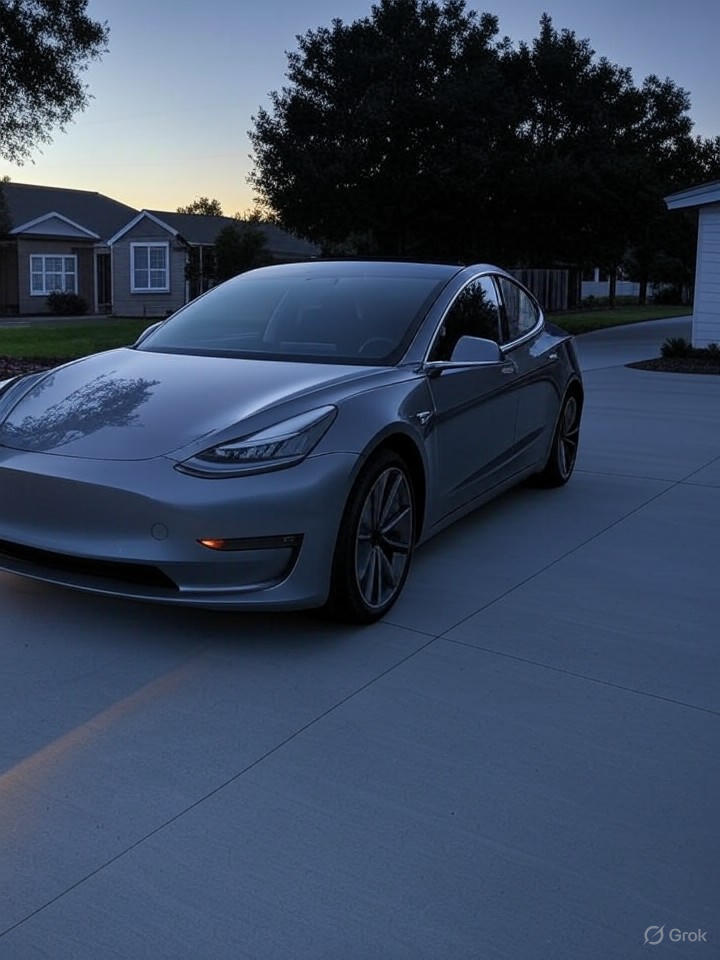As the clock ticks down to September 30, 2025, Tesla Inc. buyers are facing a high-stakes deadline for securing the $7,500 federal tax credit on electric vehicles, a incentive that’s fueling a surge in orders and deliveries. According to recent posts on X from Tesla North America and echoed by CEO Elon Musk, the credit requires not just placing an order but actually taking delivery of the vehicle by the end date. This nuance has sparked widespread urgency, with Musk emphasizing the “important re timing of vehicle delivery” in a quote of the company’s alert, highlighting that mere ordering won’t suffice amid potential supply chain and regulatory hurdles.
Industry analysts note this deadline stems from the Inflation Reduction Act, set to phase out the full credit after September 30, as detailed on the Internal Revenue Service website. Tesla’s own support page warns that the company cannot guarantee delivery timelines, advising buyers to consult tax professionals, underscoring the personal financial risks involved.
The Rush to Delivery: Navigating Tesla’s Supply Chain Challenges
Recent news reports indicate a buying frenzy, with EV sales spiking as consumers race against the clock. A Gizmodo article published just hours ago describes it as “The Great American EV Tax Credit Rush,” noting Tesla’s outsized benefits from the scramble, with order volumes reportedly overwhelming some service centers. Similarly, Autocar Professional reported 17 hours ago on surging U.S. EV sales driven by the impending cutoff, attributing the boom to fears of losing the subsidy under potential policy shifts.
Tesla’s inventory tools, as promoted in X posts from Tesla North America, direct buyers to vehicles available for immediate delivery, a strategy reminiscent of past end-of-quarter pushes. Historical tweets from Musk, dating back to 2018 and 2019, show a pattern of urgent calls to action around tax credit phase-outs, often tying them to year-end deliveries or display model discounts.
Eligibility Hurdles and Model-Specific Insights
Not all Tesla models qualify uniformly; the credit applies to vehicles like the Model 3, Model Y, and certain variants of the Model X, provided they meet U.S. manufacturing and battery sourcing requirements outlined in the Inflation Reduction Act. Kiplinger’s recent guide on EV tax credits, updated July 11, 2025, breaks down income limits—$150,000 for single filers and $300,000 for joint—which could disqualify higher earners, adding another layer of complexity.
Financing plays a pivotal role, with tips from EV Life’s blog post on July 7, 2025, suggesting buyers explore point-of-sale rebates to apply the credit upfront, potentially easing cash flow. However, Tesla’s disclaimer on its incentives page stresses that eligibility hinges on individual tax situations, and changes could arise from federal updates.
Market Implications: Broader EV Industry Fallout
The deadline’s approach has broader repercussions, as CNBC reported two days ago on EV sales soaring amid speculation of policy reversals under a potential Trump administration influence. Tekedia’s analysis from a day ago attributes the surge to legislative backing, warning that post-September, affordability could plummet for middle-class buyers, pressuring Tesla’s pricing strategy.
Insiders point to Tesla’s production ramps in Fremont and Austin as critical, yet supply bottlenecks—exacerbated by global chip shortages and labor issues—could leave some orders unfulfilled. X sentiment reflects frustration, with users sharing stories of delayed deliveries, echoing Musk’s unrelated but timely post on Full Self-Driving advancements, which might indirectly boost appeal for hurried purchases.
Strategic Advice for Buyers and Tesla’s Long Game
For prospective owners, acting swiftly means monitoring Tesla’s app for real-time inventory and considering used models eligible for a $4,000 credit, also expiring soon, per IRS guidelines. Yahoo Finance’s piece from a month ago outlines qualification steps, urging documentation readiness to claim the credit on 2025 tax returns.
Looking ahead, Tesla may pivot to alternative incentives, like software upgrades or leasing deals, to maintain momentum. As Musk’s X activity suggests, the company is betting on innovation—such as robotaxi developments—to offset subsidy losses, positioning Tesla not just as a carmaker but a tech ecosystem leader in a post-credit era. This deadline, while a short-term boon, tests the resilience of EV adoption without federal crutches, potentially reshaping competitive dynamics with rivals like Ford and GM.




 WebProNews is an iEntry Publication
WebProNews is an iEntry Publication